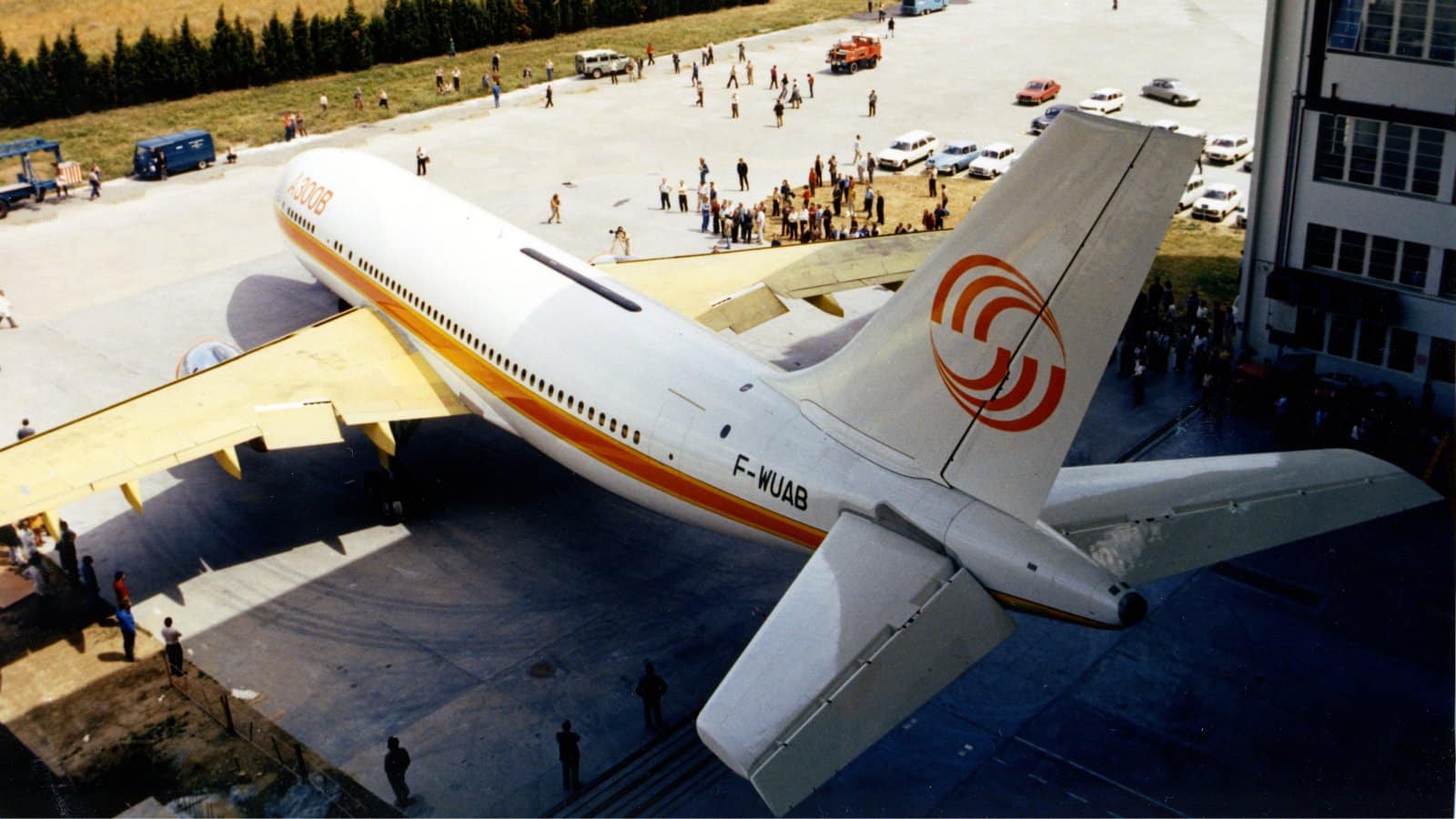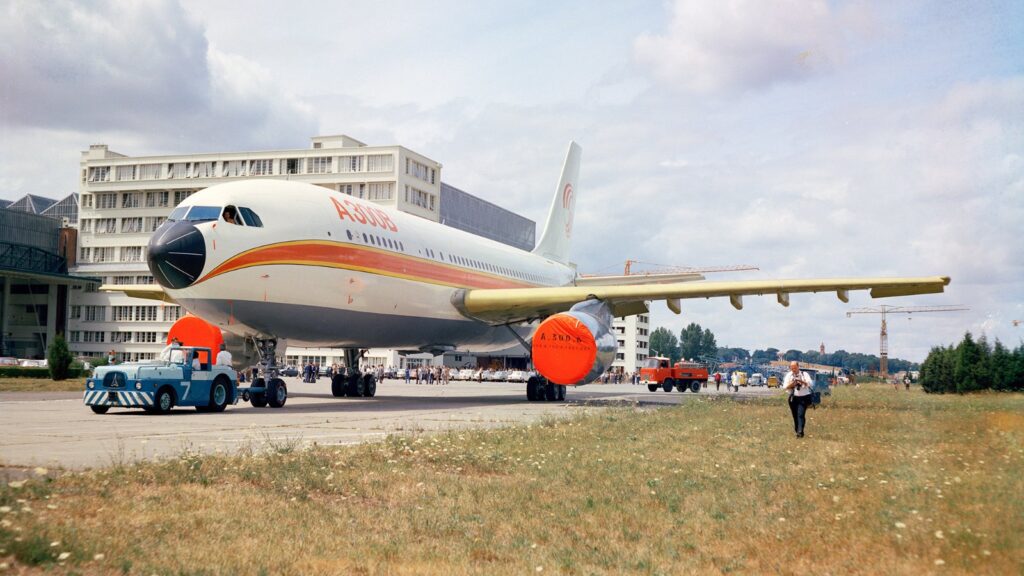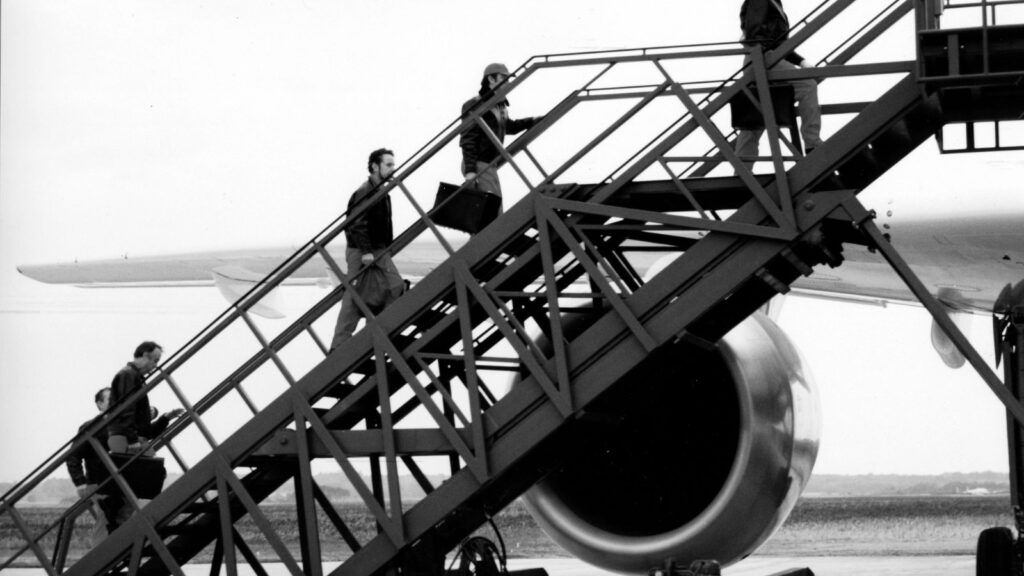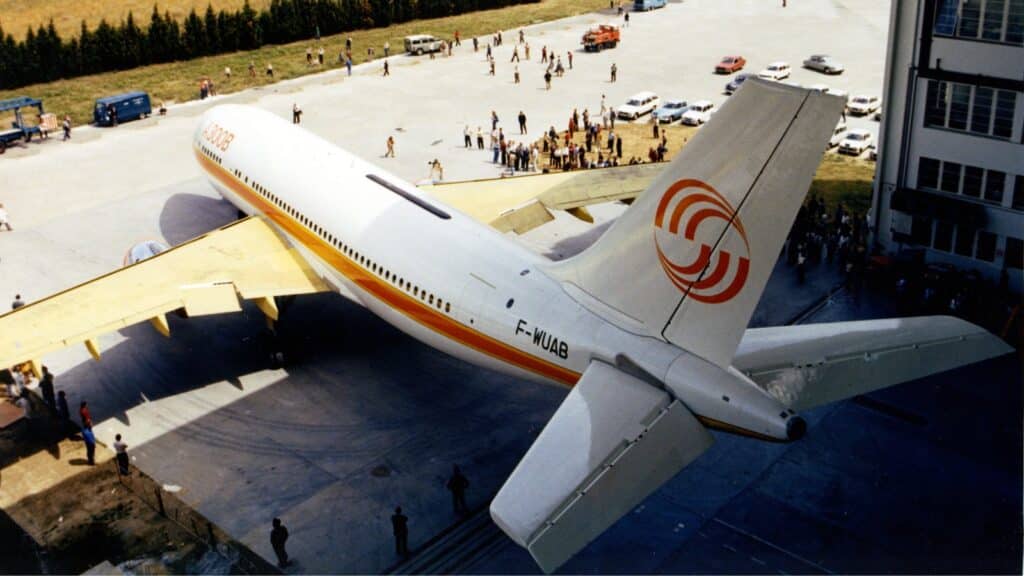Aerospace
10 facts about the Airbus First A300B Aircraft.
Airbus celebrates the launch of its first A300 aircraft. The maiden flight of the #A300 occurred on this day, 50 years ago.
#Airbus #A300B #Airbusaircraft #A330 #A300beluga

Obtaining success is not an easy challenge. Most of the time, the corporation faces financial and political difficulties. Airbus is celebrating the 50th anniversary of the Airbus A300B aircraft. The Airbus journey was truly remarkable, and many have stated that it is one of the top aerospace companies in the world. The aircraft program served as a fundamental backbone for wide-body aircraft as well as the structural framework for later versions of the aircraft. The A300B aircraft is also used to construct the A330 and A340 frameworks, as well as the Beluga Aircraft, which is based on the same framework but has been modified to transport larger aircraft.
From the design phase through the final production, Airbus faced numerous challenges, but it eventually achieved its goal. This article will go over some astonishing facts regarding the Airbus First A300B airplane.
EXPLORER design study opens up new themed worlds for VIP cabins(Opens in a new browser tab)
1. World’s first twin-engined widebody commercial aircraft
The world’s first twin-engined widebody commercial aircraft, the A300B1 development aircraft, MSN 1, with the registration F-WUAB, took to the skies on October 28, 1972, at Toulouse. The flight lasted 1 hour and 25 minutes, with a top speed of 185kt (342.6Kmh) at a height of 14,000ft (4,300m). The autopilot was activated, moving surfaces were tested, and the landing gear was retracted and deployed. The test flight crew included Captain Max Fischl, First Officer Bernard Ziegler, Flight Test Engineers Pierre Caneil and Gunter Scherer, and Romeo Zinzoni in the cockpit as Test Flight Engineer/Mechanic.
Why Are Most Airplane Seats Blue?(Opens in a new browser tab)
2. Why does every Airbus aircraft start with a 300?
By 1966, the studies had evolved into a collaborative European project, with the French government naming Sud-Aviation as its partner, while Deutsche Airbus and Hawker Siddeley represented Germany and the United Kingdom, respectively. Initially, it was planned to create airplanes with 270 to 300 aircraft seats. That is what Airbus has named their A300 aircraft.
Airbus Beluga delivers Airbus satellite to Kennedy Space Center(Opens in a new browser tab)
3. Due to its size, Airbus faces difficulties with engine development.
International phase Rolls Royce was the first engine power choice for the A300 aircraft. However, due to uncertain commercial prospects and since Rolls-Royce, the “official” UK partner in the Airbus venture, decided to focus its efforts on the development of a less powerful engine, the UK government decided to withdraw from the program in April 1969. As a result, the General Electric CF6-50A engine was chosen as the powerplant for the A300, with the added benefit of being a proven engine, lowering the risks associated with the development and certification of a brand-new airframe.
4. Airlines were requested to lower the capacity of the A300 seats.
The aircraft’s capacity had also been decreased by the time it was launched to roughly 225 passengers at the request of the first two prospective clients, Air France and Lufthansa. As a result, the design was modified to include a revised fuselage cross-section that could fit two conventional LD3 containers side by side in the belly holds and eight seats in a row (instead of nine) with two aisles. To reflect the improved configuration, this new variant was given the designation A300B.
5. Airbus functions with 4 different nations and cultures.
According to Airbus, it was considered difficult at the time to design, manufacture, assemble, and market a cutting-edge and complicated enterprise like a new generation airplane by four nations with four different languages, cultures, historical disparities, and various working processes. The initiative was supported by contributions from Spain, France, Germany, and Britain, which enabled Airbus Aircraft to develop a range of goods.
6. Modifications have been made to various A300B aircraft variants.
The two extra aircraft were used for flight testing and development prior to being delivered to clients. MSN2 was the second and last A300B1 to be built. MSN 3 was the first A300B2. Stretching the original A300B1 was done at Air France’s request. The A300B2 was 2.6m longer and had a two-class capacity, which became the norm for all subsequent A300B2 & B4 variants (the B4 had the same seating capacity as the initial B2 but with an increased range, allowing it to enter the medium-range market)
7. A300 is designed to last for almost 35 years.
Later, the A300 proved to be an exceptionally effective development platform, enabling the design, testing, and construction of various versions over the course of its planned lifespan of about 35 years. These include the A300B10, which had its initial flight in April 1982 and was eventually launched in 1978 as the A310. The A310 was the medium-long haul, shorter, lower-capacity version of the A300, but with a fully redesigned wing.
8. The same airframe was used for Beluga aircraft too.
In 1993, the passenger plane’s cargo variant, the A300-600F, started flying. The A300B9 and A300B11 programs, which used the same ground-breaking fuselage cross-section as the first A300, would eventually serve as the prototype for the A330 and A340 family of aircraft. Last but not least, five A300-600ST “Belugas” would be produced to satisfy Airbus’ internal needs for more space for large transport and to replace the fleet of deteriorating Aero Spacelines Super Guppy aircraft. All kinds and configurations of A300 family aircraft totaled 821 in total production.
On this day 50 years ago, the #A300 took to the skies? for the very first time. This incredible achievement and constant design evolution across the family led to the first of many firsts that propelled #Airbus to where it is today.https://t.co/vl078ttkkK pic.twitter.com/vC7rMU0Ymu
— Airbus (@Airbus) October 28, 2022
9. There are currently more than 250 A300/A310 aircraft in use.
37 operators are now using more than 250 A300/A310 aircraft. The third most often used type of freighter worldwide, freighters make up 75% of the fleet. Four significant clients operate more than 60% of the fleets, and they plan to continue doing so through at least 2030.
10. The early slogan of Airbus was “the start of something big.”
Early A300 advertisements from 1968 described it as “the start of something big.” After 50 years, Airbus has become a truly global firm, with operations in five different continents for manufacture, assembly, sales, and services. The A380 and A350 are two examples of cutting-edge commercial aircraft developed by Airbus. Both are currently distinct characteristics of aircraft. Airbus advanced in a variety of aerospace projects, including helicopters, space technology, EVtol, and defense.
Please share this post with your loved ones if you enjoyed it. Thanks for reading.
Story courtesy: Airbus

Aerospace
Which is bigger 777x or 787 aircraft ?

The 777X is a new series of the Boeing 777 family and is designed to be larger and more efficient than its predecessor. It features two variants: the 777-8 and the 777-9, being the larger of the two.
The Boeing 777X emerges as the larger sibling within the Boeing family, representing a significant leap forward in both size and efficiency. Comprising two variants, the 777-8 and the 777-9, the latter takes the crown as the larger of the two. With its expansive fuselage and impressive wingspan, the 777X is tailored for long-range journeys and boasts a substantial passenger capacity.
On the other hand, the Boeing 787, affectionately known as the Dreamliner, occupies a niche in the market as a smaller yet formidable aircraft designed for medium to long-range flights. Its distinguishing feature lies in its composite fuselage, a technological marvel that renders it lighter and more fuel-efficient compared to conventional aluminum counterparts. The Boeing 777X is larger than the Boeing 787 aircraft.
When it comes to passenger capacity, the 777-9 reigns supreme, typically accommodating a sizeable contingent of 400-425 passengers in its standard configuration. In contrast, the 787, with its more modest dimensions, typically carries between 240-290 passengers, depending on the variant and layout.
One of the remarkable innovations introduced with the 777X is its folding wingtips, a feature designed to address the logistical challenges of accommodating such a large aircraft in conventional airport gates. These folding wingtips enable the 777X to retract its wings, allowing it to fit into gates designed for smaller aircraft while still reaping the benefits of an extended wingspan during flight, thereby enhancing fuel efficiency and operational flexibility
Aerospace
China Secures Production Certificate for Mass Production of Pilotless eVTOL Aircraft

The first passenger-carrying pilotless electric vertical takeoff and landing (eVTOL) aircraft in the world, the EH216-S, has received the Production Certificate for its eVTOL aircraft from the Civil Aviation Administration of China (CAAC).
This is a significant milestone for EHang Holdings Limited, the leading UAM technology platform company in the world. This outstanding accomplishment is another big step towards mass manufacturing for the eVTOL aircraft and the ensuing commercial operations, building on the ground-breaking acquisition of the Type Certificate and the Standard Airworthiness Certificate for the EH216-S.
The PC is a crucial certificate that the aircraft maker receives from the CAAC, the country’s aviation authority. By obtaining this certificate, EHang has demonstrated that it has set up a quality management system for mass production that satisfies the airworthiness regulation standards set forth by the CAAC, and the company has been given permission to continue producing mass quantities.
It is also a strong guarantee of the calibre of the goods made by EHang. Raw materials, supplier management, manufacturing organisation, production quality control, aircraft pre-delivery test, after-sales repair and maintenance, etc. are all included in the mass production quality management system for the EH216-S.
To ensure that every aircraft and its components that roll off the production line strictly adhere to the approved type design and safety requirements, the system sets clear guidelines and documentation for every step in the production procedure. This ensures comprehensive traceability and safety control.
Aerospace
Four Airbus A380 Superjumbos lined up to be scrapped

In a strategic move aimed at reclaiming valuable resources from the iconic Airbus A380 aircraft, VAS Aero Services and Dr. Peters Group have announced a significant collaboration.
This partnership marks a milestone in aviation logistics and aftermarket services, with four of these colossal planes slated for teardown and redistribution of used serviceable material (USM).
The venture between VAS Aero Services, renowned for its expertise in aircraft dismantlement, and Dr. Peters Group, a prominent Germany-based investment fund management firm, underscores a commitment to sustainable aviation practices. This isn’t their first foray into scrapping A380s; their successful partnership has already seen the dismantlement of these aircraft, making them pioneers in this niche.
Under the agreement, the latest consignment brings the tally to eight A380s entrusted to VAS by Dr. Peters Group. Managing Director Christian Mailly of Dr. Peters Group emphasized the trust placed in VAS, citing their unparalleled capabilities in dismantlement and aftermarket sales network. It’s a strategic move in response to the growing demand for quality USM parts, particularly with the resurgence in reliance on the A380.
Notably, the teardown process will be carried out at various locations, optimizing the positioning of harvested parts to cater to different markets. While some parts will be positioned in Europe to support operators in the region and the Middle East, others will remain in the Asia-Pacific region. This meticulous strategy ensures efficient access to spare parts, benefiting MROs and airlines across these markets.
The decision to retire these A380s comes at a time when operators are reassessing fleet strategies amidst evolving market dynamics. Despite initial plans for quick retirement due to the emergence of more fuel-efficient alternatives, factors such as a rebound in long-haul demand and delays in new widebody deliveries have prompted operators to reconsider. The A380, with its unique capacity and capabilities, presents a practical solution for short-term capacity management.































